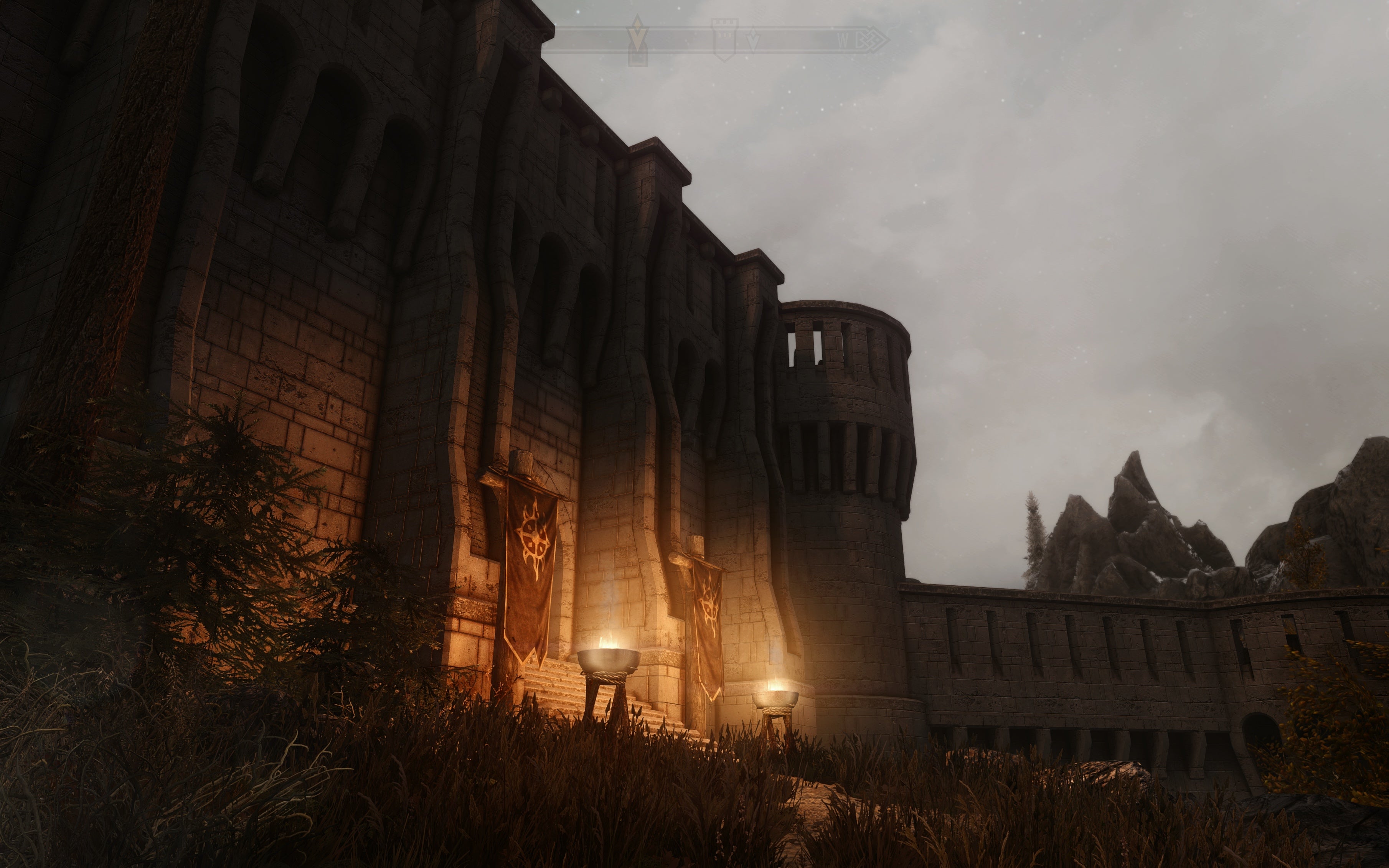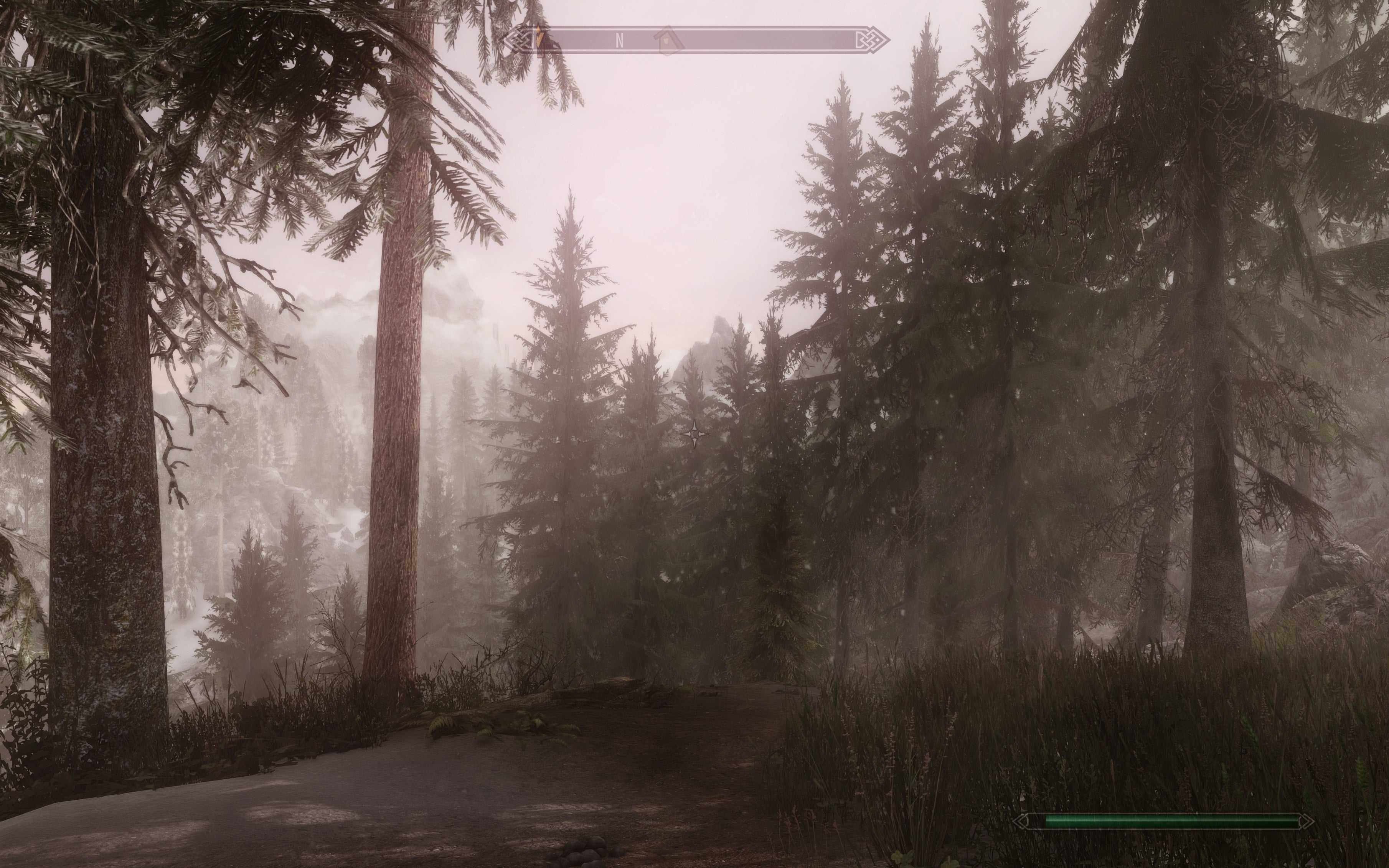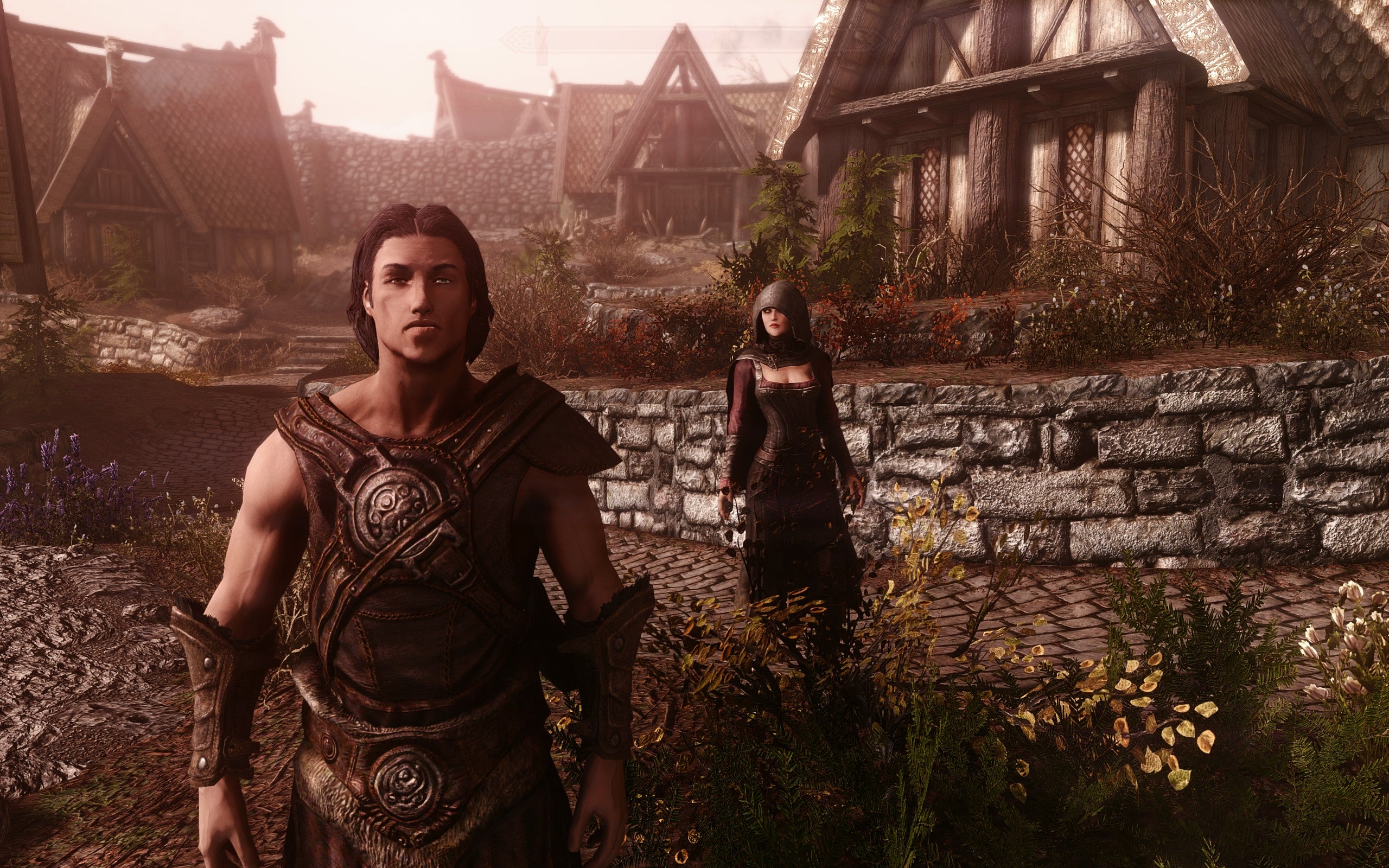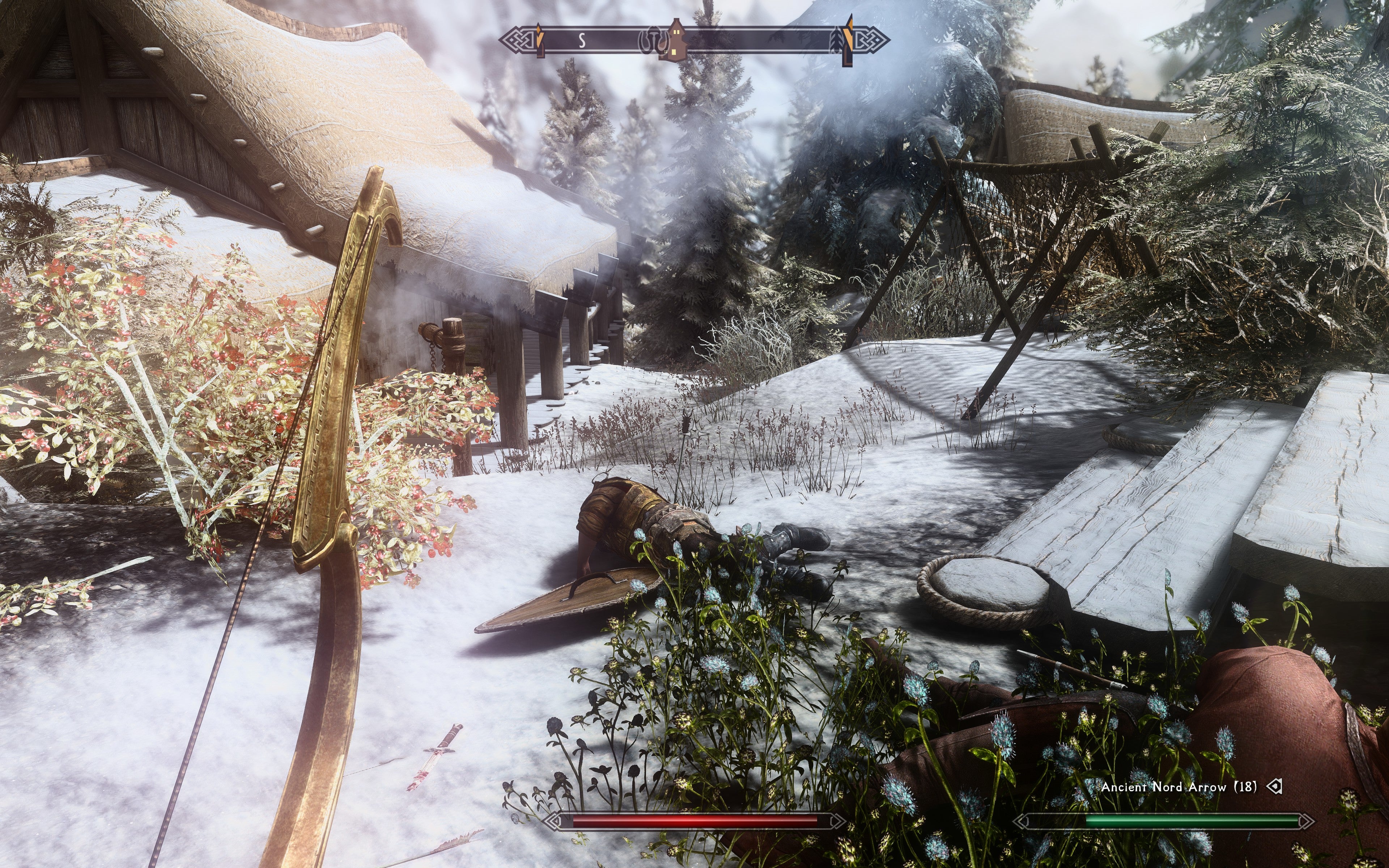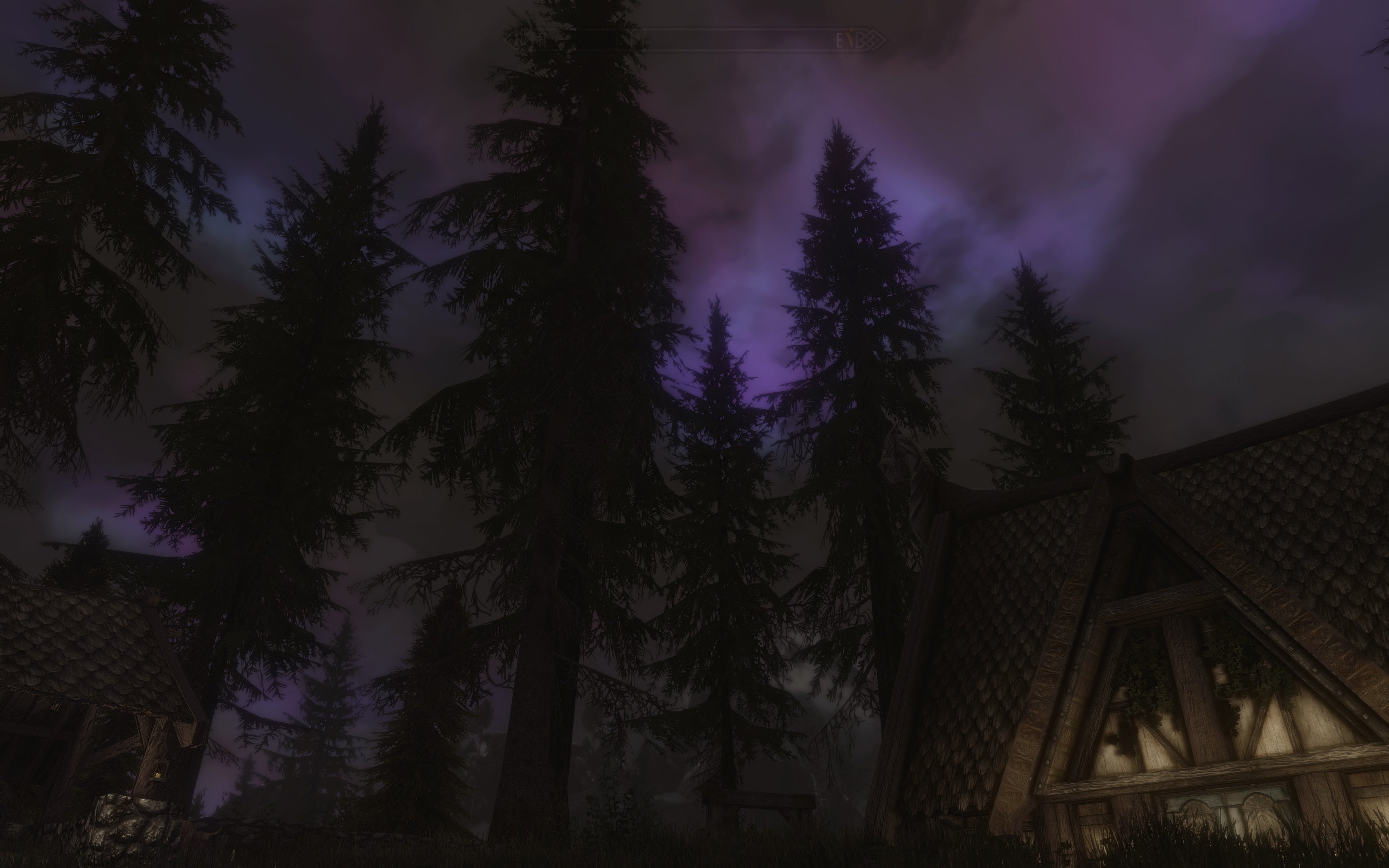Its current incarnation, running over 400 mods and held together with convoluted .ini files and prayers, is probably the best-looking game I’ve seen running on PC. Admittedly most of those mods are for penis physics, but there are also reshades, lighting tweaks, ENBs, new flora and fauna, improved NPC faces, clothing, weapons, dungeon mise-en-scene, and – of course – the textures. All the lovely textures. I don’t care if it’s a book spine, a street sign or an individual rock on the path to Riverwood. If it’s not at least 4K, it’s not showing up in Phil’s Skyrim, thankyouverymuch. So at this point, not only does it look nearly unrecognisable from the Vanilla Skyrim of 2011, it’s also working every asset harder than any commercial release would dare to do in 2022. And that’s only possible because modders hold no responsibility for the performance of the game. Unlike a developer making a traditional paid model release, modders don’t face any flak for putting out content that sends your frame rates into single figures. They’re not trying to artfully balance your system resources or even run their content across both console and PC platforms. They’re free to simply create whatever they like – download it if you want, or don’t. Inevitably, then, the version of Skyrim I’ve magicked into existence with mods is not an optimised experience. It drops more frames than Ronnie O’Sullivan when his head’s gone. If minimum system requirements were needed to be released for my precariously balanced pile of 400 mods, they would probably read: ‘CPU: doesn’t matter. GPU: doesn’t matter. It’s never going to run above 37fps.’ The Elder Scrolls 6 will not be free from such concerns when it arrives. It will be the biggest video game launch of the year – whenever that year may be – and perhaps of the decade. As such, Bethesda will want to put it in front of as many gamers as possible, a full gamut of platforms and PC specs from ‘RGB-daubed cryptofarm’ to ‘literally just a potato’. And when you think about it like that, it seems very unlikely that Skyrim’s successor will look significantly better in visual terms than the Skyrim we hold in our minds today. Quite a dispiriting thought, that. Even with more than a decade’s tech advancements (and two further console generations), the new Elder Scrolls probably won’t look leaps and bounds better than the one we already have. Well, the one that PC players with saintly patience and a rig that makes the entire national grid flicker when you turn it on have, at any rate. There’s a bittersweet poetic irony to it: had players not fallen so in love with Skyrim, and had Bethesda not been thoughtful enough to make modding relatively easy, Elder Scrolls 6 wouldn’t be in this pickle. Simply by looking about as good as most new releases, it would have blown that grey-brown world of muddy-faced basic poser models and fugly mammoth textures right out of the water. But let’s not get too carried away with the idea, because there are distinct areas Bethesda can focus on, beyond texture resolution and reshade techniques, to make its next Scrolls look wondrously advanced and light years beyond Skyrim. Areas like animation. The way NPCs lolloped around like hungover robots looked a bit rudimentary in 2011 – by now, it’s like looking at cave drawings. And the mods raising the fidelity level in other areas only serve to highlight how outdated Skyrim’s animations are now. There are, of course, animation mods too, but these generally focus on combat and can’t totally transform the systems at play under the hood – it’s basically really clever keyframing. Lighting is a biggie, too. ENB and reshade work well at transforming older games, but the latest console generation has helped devs implement more sophisticated lighting, safe in the knowledge a large part of their userbase has the hardware to handle it. Ray tracing alone has the power to totally transform a space, and GTA 5’s various ray tracing mods are a fine example of that. See also: Quake II RTX. One lighting technique applied, and a game from 1997 looks like the best thing your PC’s ever run. Learning AI techniques like Nvidia’s DLSS can help Elder Scrolls 6 to push the fidelity further than it might otherwise. By running the game through a supercomputer over and over again, DLSS generates an algorithm for upscaling which a dedicated core on your graphics card interprets and implements. It’s much less system-intensive than running at a higher resolution natively, and that gives studios some extra system resources to play with. Will Bethesda, though? Based on recent form (if you can call Fallout 76 and Fallout 4 recent), pushing the visual limits to the very edge of our credulity doesn’t seem to be a high priority. Instead, the focus has been all about building a massive open world efficiently, using modular asset libraries that can be remixed to produce seven different dungeons out of one bank of textures and objects. Most triple-A open world games are built to this design philosophy now – it’s the only way to create them in cost and time-effective fashion. But as the player, you can always tell. Maybe not in the first hour, maybe not in the fifth. But eventually you start to see all the repeated assets, and that robs a world of feeling like a place. It starts to feel like a video game. And it’s the sense of place that will probably prove most crucial to The Elder Scrolls 6’s success. It’s certainly been the beating heart of Skyrim’s. It’s a tiny world map now – by modern standards – but even within a relatively small space adhering to the tenets of one wintery biome, there’s tremendous variation, intrigue, and passive storytelling to the world. You crest a hill, and you see something you just have to investigate. You come across an upturned cart, a dead horse, and a man with a suspicious smile standing in the road, and you understand there’s been some form of highway skullduggery at foot here. You journey back to Riverwood time after time, just because it looks nice. That’s in part why modders felt so inspired to keep building on the world and improving it, bringing it to life in ever-more vivid detail over the years. And that’s going to be even more important than the visual fidelity of The Elder Scrolls 6. So please, Bethesda: give us another place this good. And let us keep making it better, years after you leave it alone.
